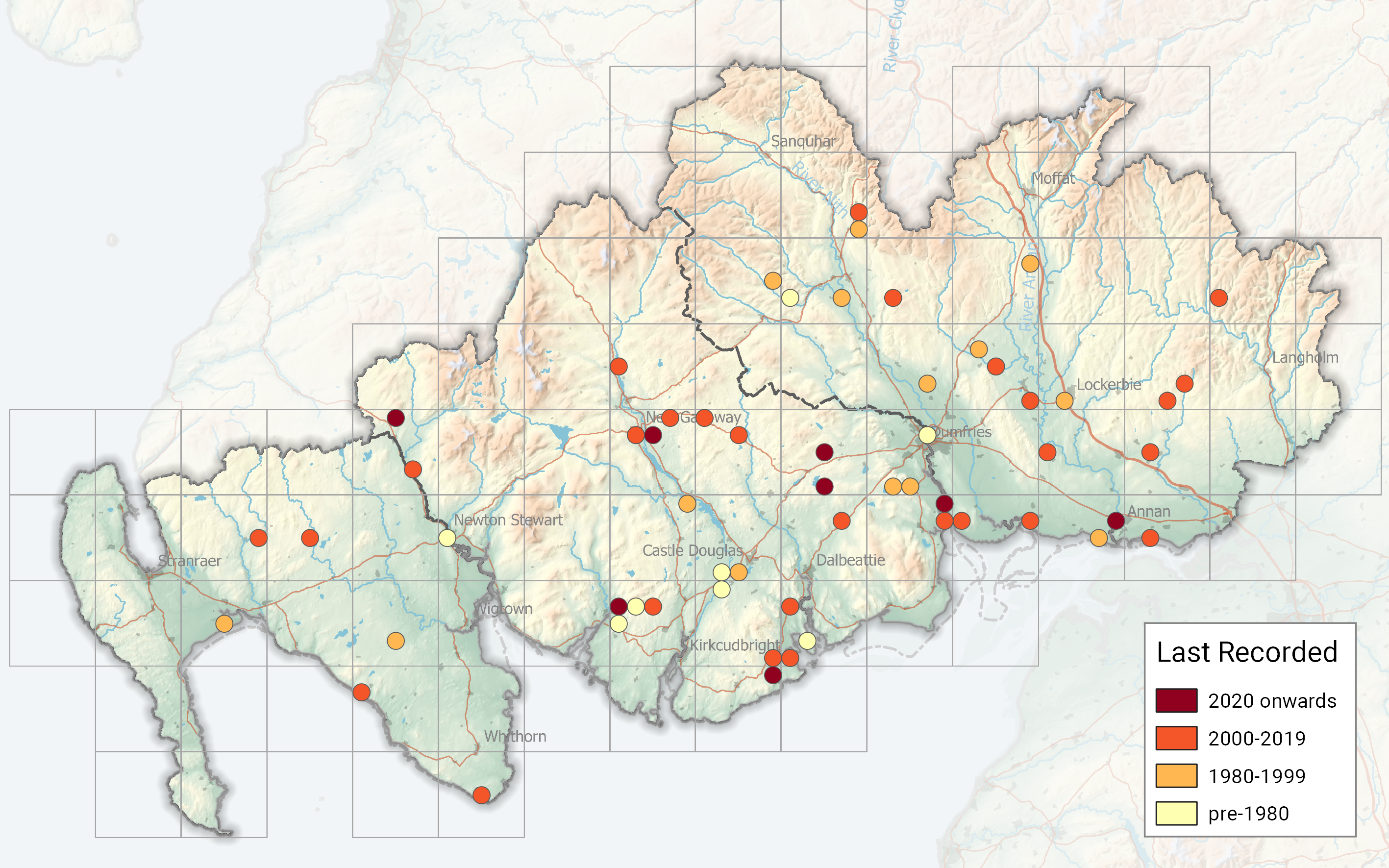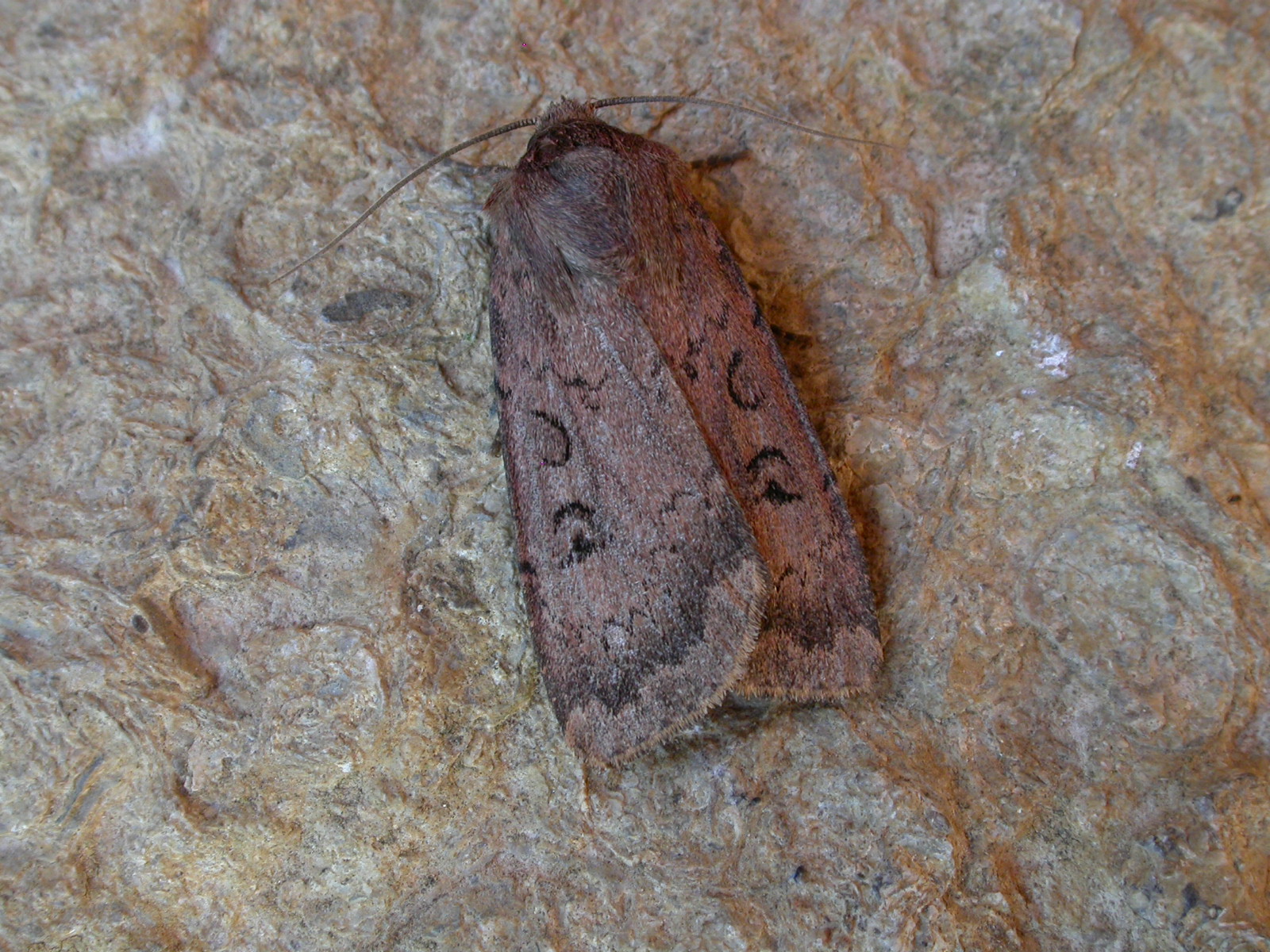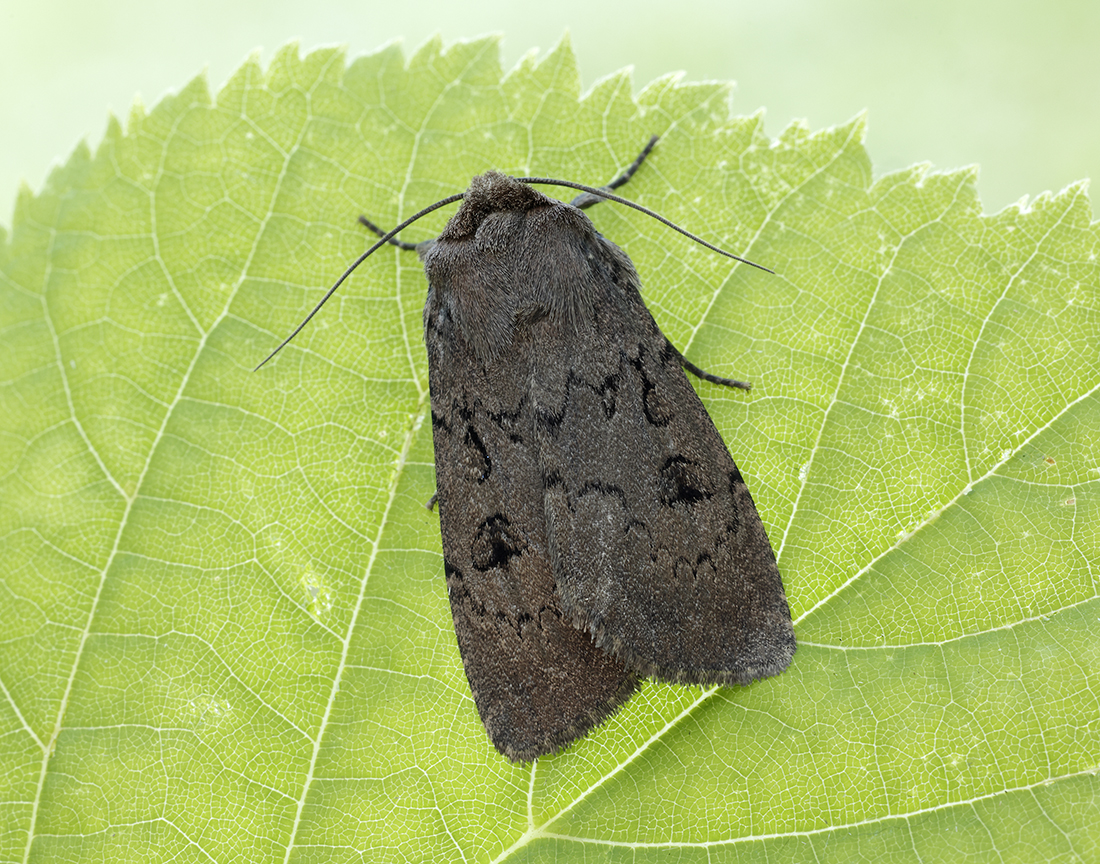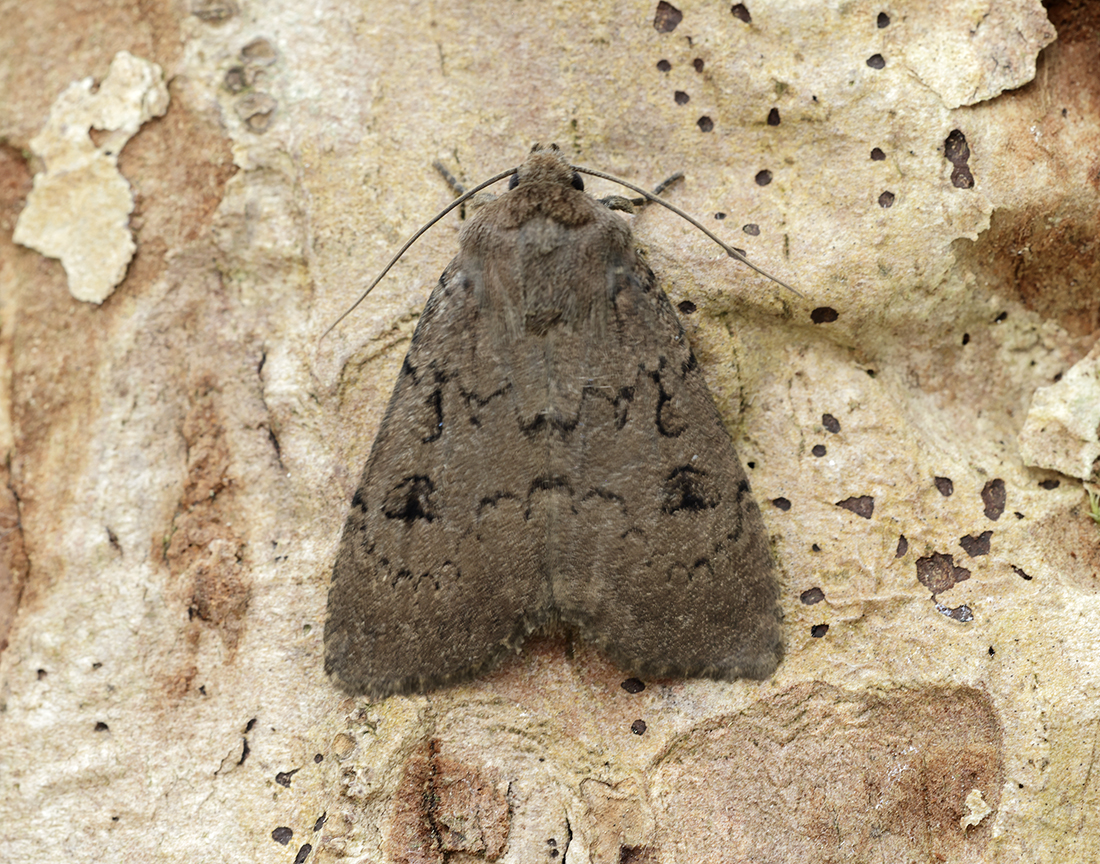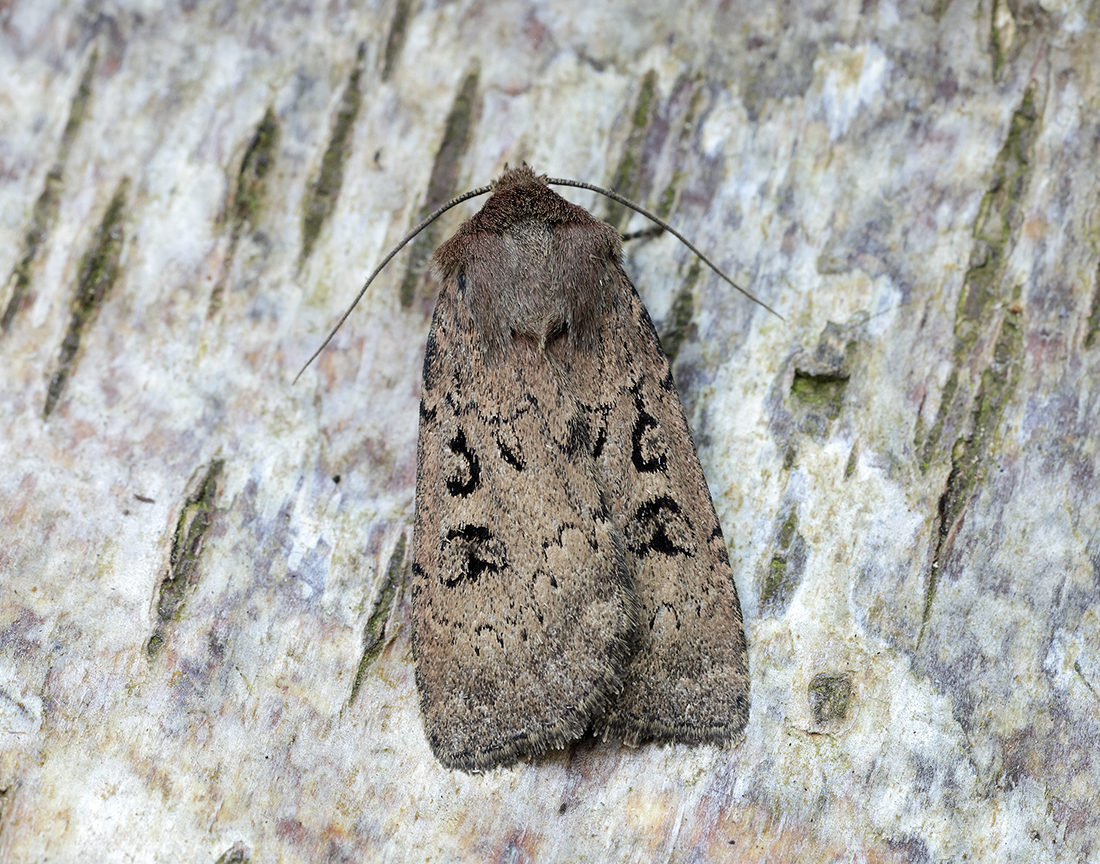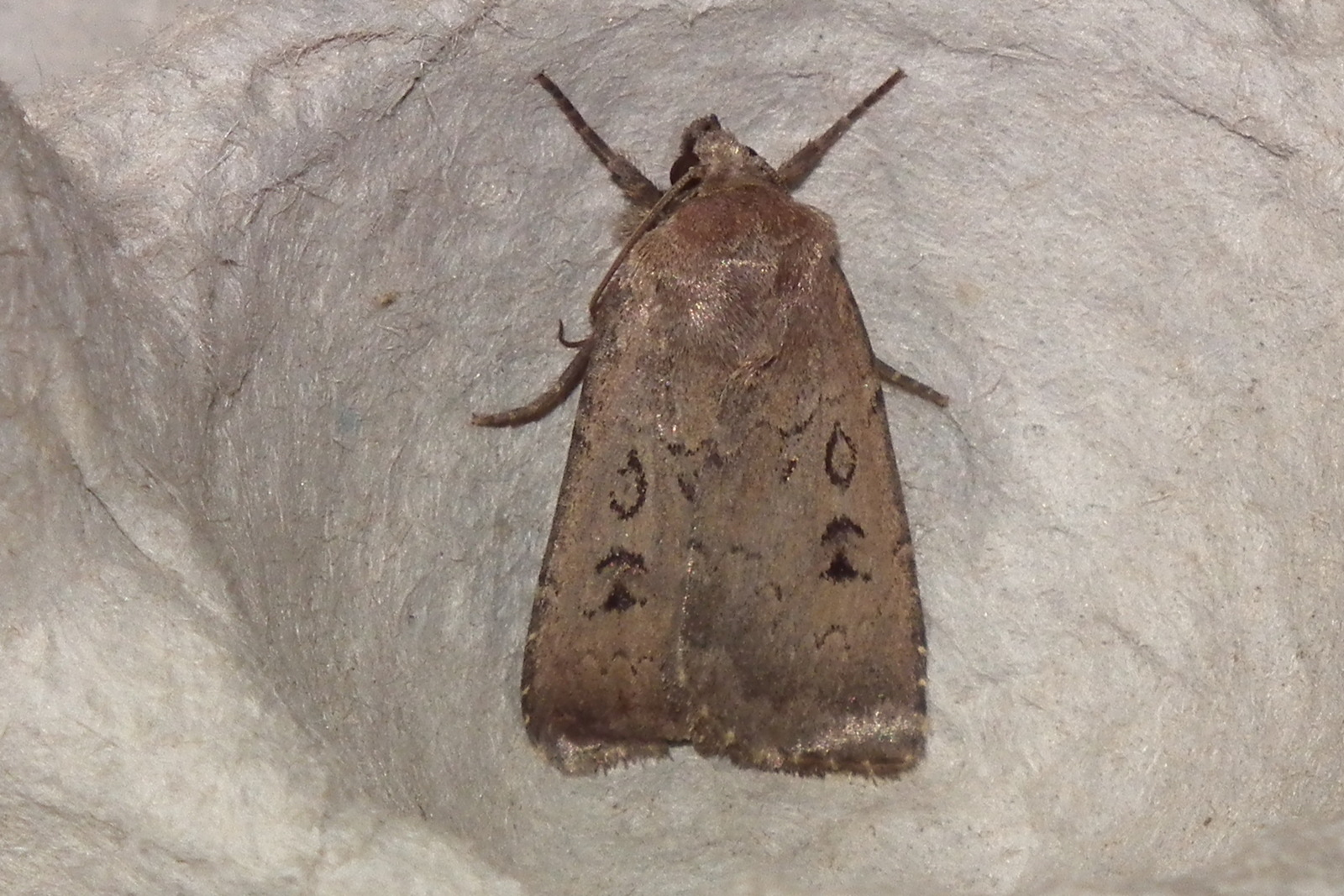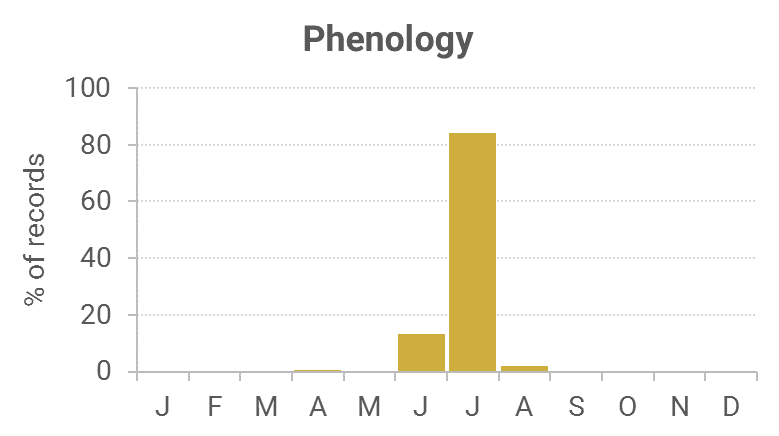Identification
Unmistakable.
Recording Method.
Attracted to light, also comes to sugar and flowers.
Life Cycle
One generation. Overwinters as a small larva during August to May, close to the ground, feeding by night and hiding by day in leaf litter. Pupation taking place just below the ground surface.
Larval foodplants
Blackthorn and Hawthorn scrub, Sallows, birches and occasionally Broad-leaved Dock.
Habitat
A wide variety of habitats including hedgerows, parkland, marshes, gardens and broadleaved woodland.
History
Lennon (1863) stated that it was common around the Dumfries area. Douglas Robinson (1870-71) had found it common in June on Almorness (VC73). Gordon (1913) found it to be generally distributed and common sometimes at sugar in the woods around Corsemalzie, Wigtownshire, during June.
Sir Arthur Duncan (1909-84) during his lifetime had found it at Closeburn and Tynron (VC72). Archibald Russell (1944) listed it as occurring near Gatehouse of Fleet (VC73) during the years 1942-43.
Pelham-Clinton found it at Glenluce (VC74) in the late 1950s. But from 1974-82 Rothamsted data is sparse with one record from Newton Stewart, three each from Gatehouse of Fleet and Bridge of Dee, but Waterside Mains at Keir producing 28 records. One other RIS record occurred at Mabie Forest in 1989.
From 1995 to 2005 there were about fifty records from Durisdeer, with another twenty records from Dumfriesshire and Kirkcudbrightshire.

